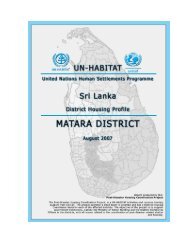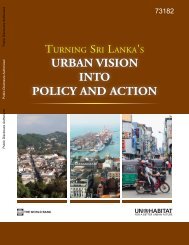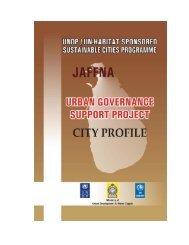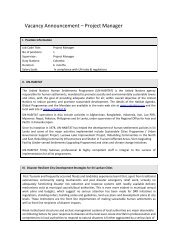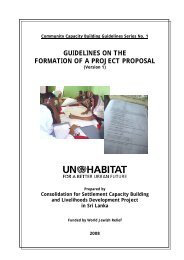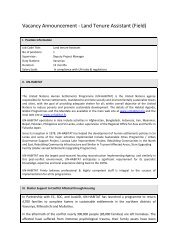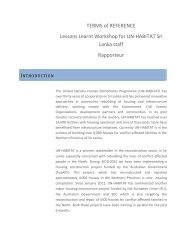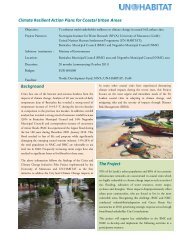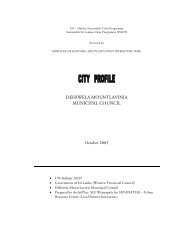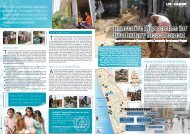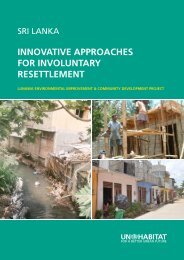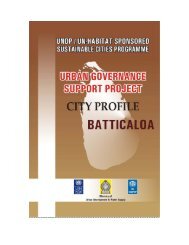Conference Proceedings : âJANASEVANAâ National ... - UN HABITAT
Conference Proceedings : âJANASEVANAâ National ... - UN HABITAT
Conference Proceedings : âJANASEVANAâ National ... - UN HABITAT
You also want an ePaper? Increase the reach of your titles
YUMPU automatically turns print PDFs into web optimized ePapers that Google loves.
1/5/2012<br />
DEMAND FOR HOUSING IN SRI LANKA<br />
• The Central Bank of Sri Lanka (CBSL) estimates the annual demand for<br />
new houses to increase at the rate of 50,000 – 100,000 units<br />
• According a report titled ‘Expanding Housing Finance to the<br />
Underserved in South Asia’, the yearly incremental demand not being<br />
met is roughly two thirds and the demand‐supply gap at between<br />
350,000 – 1.5 million housing units, as of 2010<br />
• The <strong>National</strong> Housing Development Authority (NHDA) claims that while<br />
demand for housing may reach around 100,000 units every year, around<br />
half this demand is met<br />
• Official estimates put the existing demand‐supply gap at 350,000<br />
housing units in Sri Lanka, and the overall shortage could exceed<br />
650,000 units in 2010<br />
• Density in Sri Lanka is an outlier at 1.1 persons per room<br />
3<br />
WHAT IS SOCIAL HOUSING<br />
Social housing is an umbrella term referring to rental housing which may be owned and<br />
managed by the state, by non‐profit organizations, or by a combination of the two,<br />
usually with the aim of providing affordable housing. It can also be seen as a potential<br />
remedy to housing inequality<br />
On the lines of functions of Social housing, Amzallag and Taffin (2003) classify three<br />
approaches:<br />
1. Institutional approach: social rentals owned and managed by social landlords<br />
(municipal bodies, non‐profit corporations or associations), legally endorsed task to<br />
provide affordable dwellings;<br />
2. Public assistance approach: rentals are social whenever they get preferential land<br />
assignments, subsidies or tax allowances or else public guarantees, mostly tied to rent<br />
regulation, means testing, profit constraints;<br />
3. Household resources approach: social rentals defined as “below market rent”<br />
dwellings, open to households who cannot not satisfy their housing needs on a free<br />
market.<br />
This presentation focuses on the justification of social housing providers, hence the<br />
institutional approach is given preference<br />
4<br />
2



